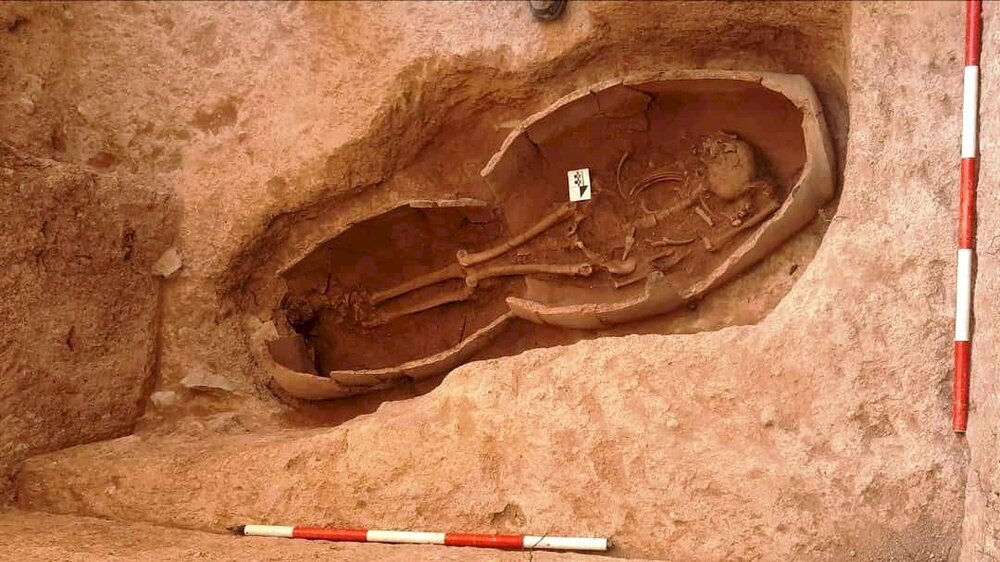Millennia-old tomb, skeleton and spearhead unearthed in western Iran

TEHRAN – A team of Iranian archaeologists has discovered an ancient human skeleton with a spearhead beneath its ribs in a tomb chamber in a rural area, western Kordestan province.
The skeleton is estimated to date back to the Parthian-era (247 BC – 224 CE), the provincial tourism department announced on Saturday.
Supervised by the Research Institute of Cultural Heritage & Tourism, the survey was conducted near the construction site of a dam in Sarvabad county. The tomb chamber was found in one of the archaeological trenches in a rural landscape.
“In the Parthian burial tradition, [giant] jars usually played the role of coffins, and in the discovered tomb, according to the Parthian culture, the body was placed inside two earthen jars… Below the ribs, the body appears to have belonged to a person who died of injuries,” Shokouh Khosravi, who led the project, explained.
The Parthian Empire, also known as the Arsacid Empire, was a major Iranian political and cultural power in ancient Iran. The Parthians largely adopted the art, architecture, religious beliefs, and royal insignia of their culturally heterogeneous empire, which encompassed Persian, Hellenistic, and regional cultures. At its height, the Parthian Empire stretched from the northern reaches of the Euphrates, in what is now central-eastern Turkey, to eastern Iran.
AFM/MG
